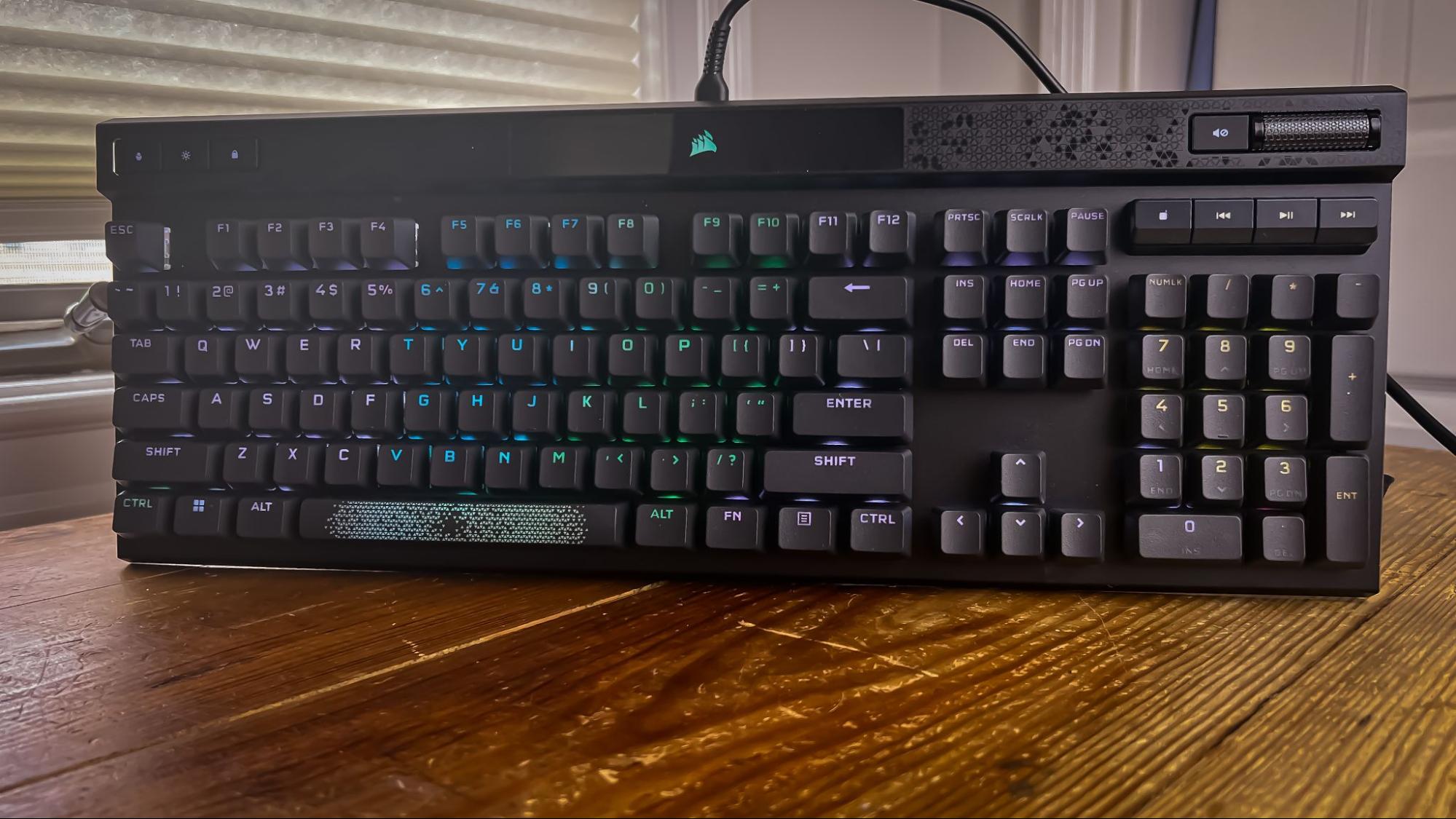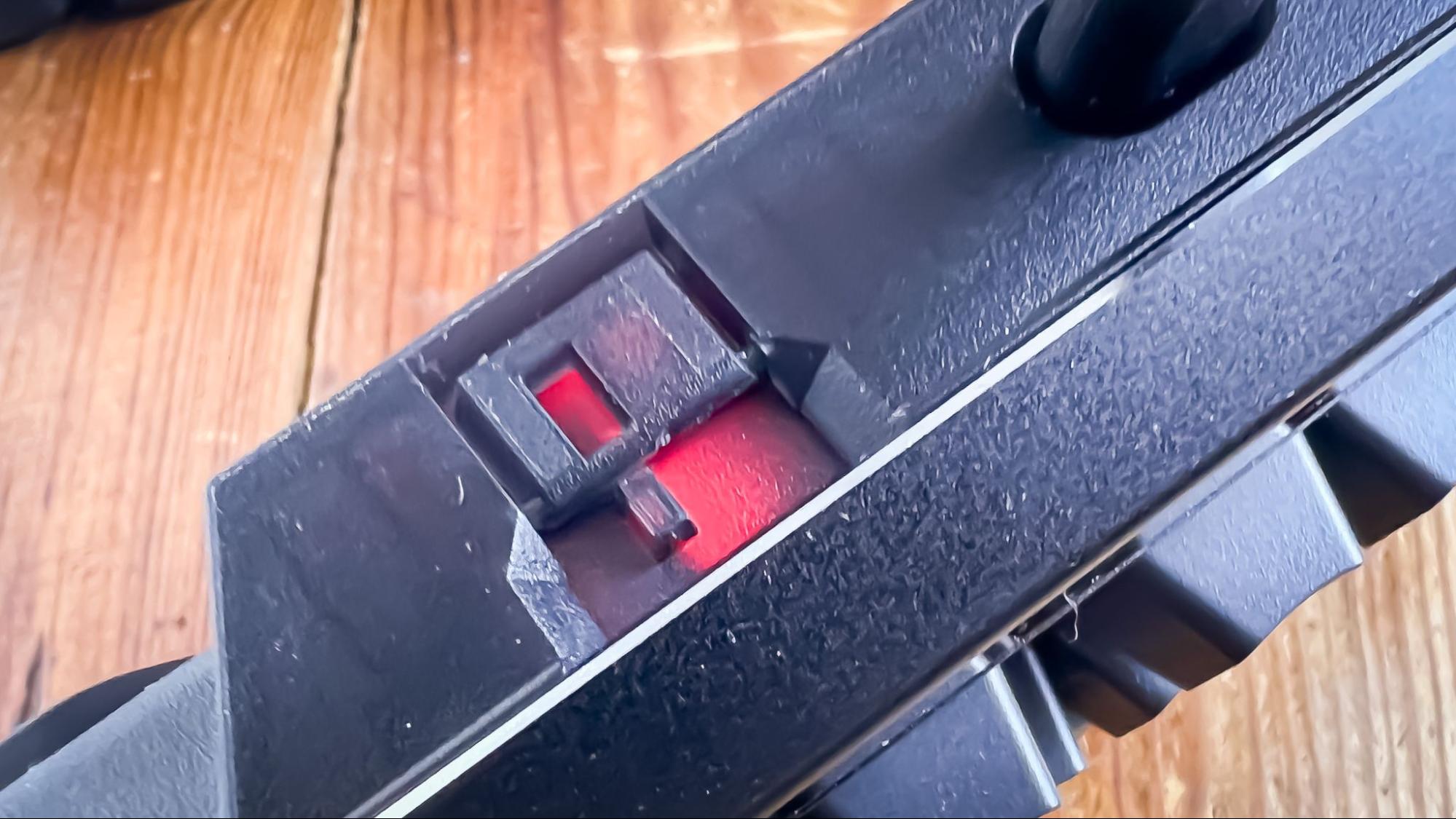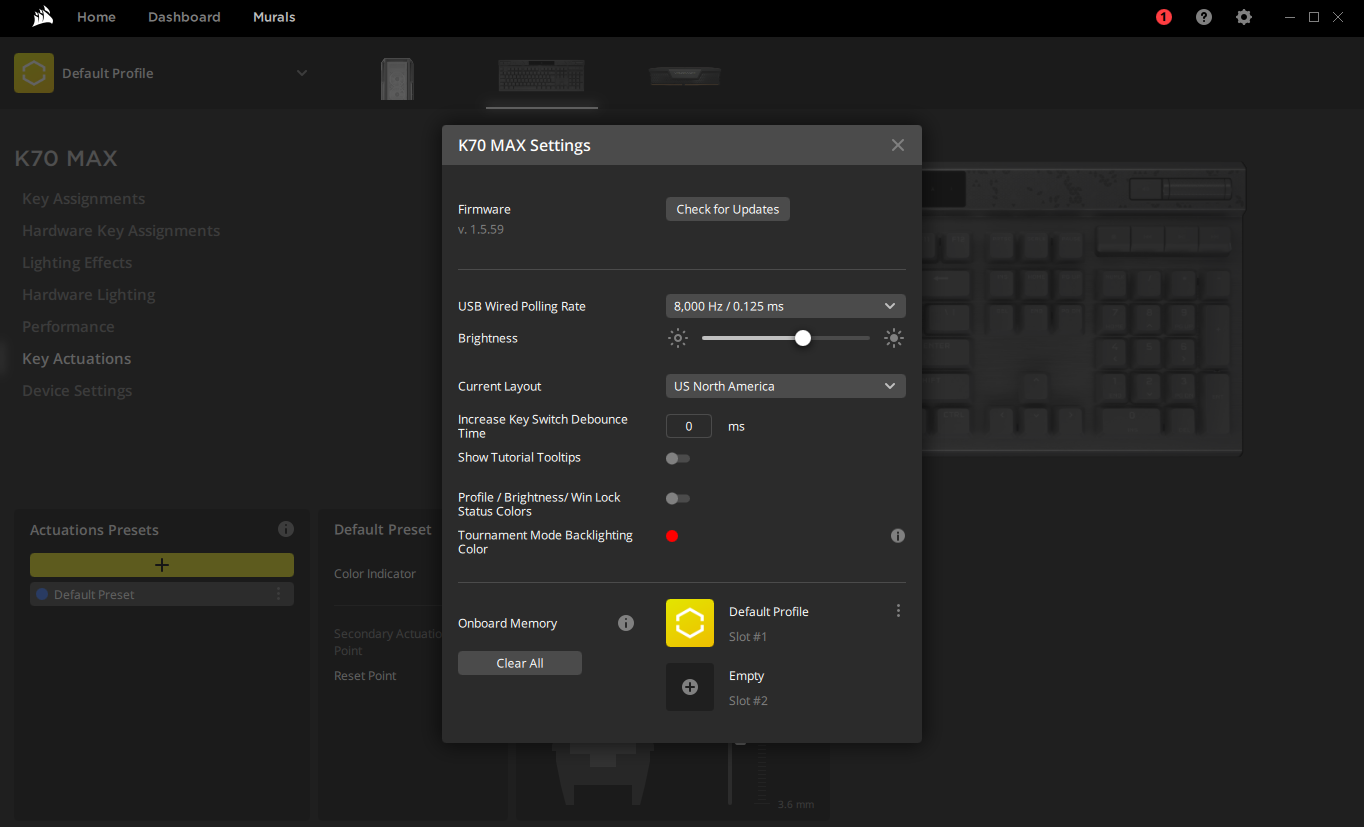Tom's Hardware Verdict
Despite its high price of $230, the level of detail, unique magnetic switches, and high level of customization make the Corsair K70 Max RGB totally worth it.
Pros
- +
Adjustable Magnetic Switches
- +
Double-shot PBT keycaps
- +
Dedicated media keys
- +
Capacity for 50 onboard profiles and 20 lighting profiles
- +
No more case ping
Cons
- -
Expensive
- -
Terrible wrist rest
Why you can trust Tom's Hardware
The best gaming keyboards have come a long way from rubber domes and red backlighting, and this is evident in Corsair’s new K70 Max RGB. The K70 Max RGB comes with sound-dampening materials inside the case and adjustable magnetic switches, as well as most of the features from its predecessor, the K70 Pro RGB..
The K70 Max RGB isn’t the most affordable board on the market, however — it has an MSRP of $230, which is quite a jump from the $160 Corsair K70 Pro RGB.
Specs
| Switches | Corsair MGX |
| Lighting | Addressable |
| Onboard Storage | Yes, 50 profiles |
| Media Keys | Yes |
| Connectivity | USB Type-A to Type-C |
| Cable | 6-feet, braided |
| Additional Ports | 0 |
| Keycaps | Double-shot PBT |
| Software | iCUE |
| Dimensions (LxWxH) | 17.4 x 6.54 x 1.54 inches / 442 x 166 x 39mm |
| Weight | 3.06 pounds / 1388g |
| MSRP / Price at time of release | $230 / $230 |
| Release Date | Aug. 10, 2023 |
Design of the K70 Max RGB
The new Corsair K70 Max RGB is a full-size board with double-shot PBT keycaps, flip-up feet, and a boatload of RGB. This isn’t my first rodeo with the K70 line, as I reviewed the original K70 RGB Pro in early 2022. The K70 Max RGB comes with most of the same defining features as its predecessor, including AXON technology (for far too many onboard profiles than you will ever need), bright RGB backlighting, and an adjustable polling rate of up to 8,000 Hz.
You might be asking, “What’s the difference?”
Well, it seems Corsair returned to the drawing board and addressed some of the gripes I had with the original — such as case ping so loud it could be heard in the future. In the K70 Max RGB, Corsair added in two layers of sound-dampening material — and it sounds fantastic.
While Corsair’s magnetic switches aren’t revolutionary, especially since the Wooting Two HE was released in 2021, I prefer the K70 Max RGB a lot more than the Wooting Two HE. Unlike the Two HE, the K70 Max RGB’s switches feature dual-actuation, which means you can assign a second actuation point. For gamers, this means you can activate crouch and then drop to prone using the same key — depending on how hard you press. This is similar to the dual-actuation seen in SteelSeries’ Apex Pro Mini and Apex Pro TKL Wireless. As for feel, the switches are very similar to Cherry MX Reds, with a spring weight of 45g and a linear feel (and, of course, dual-actuation with an adjustable actuation point — they’re basically futuristic MX Reds).
Design-wise, the K70 Max RGB looks very similar to the K70 Pro RGB, but Corsair has updated the top of the board to feature the triangular pattern the company has been obsessed with. Corsair also includes a spacebar with a triangular pattern to allow for more RGB and an escape keycap with the company’s logo. The keycaps on the K70 Max RGB are the same as those on the K70 Pro RGB: thick, durable double-shot PBT with excellent RGB shine-through.
Get Tom's Hardware's best news and in-depth reviews, straight to your inbox.
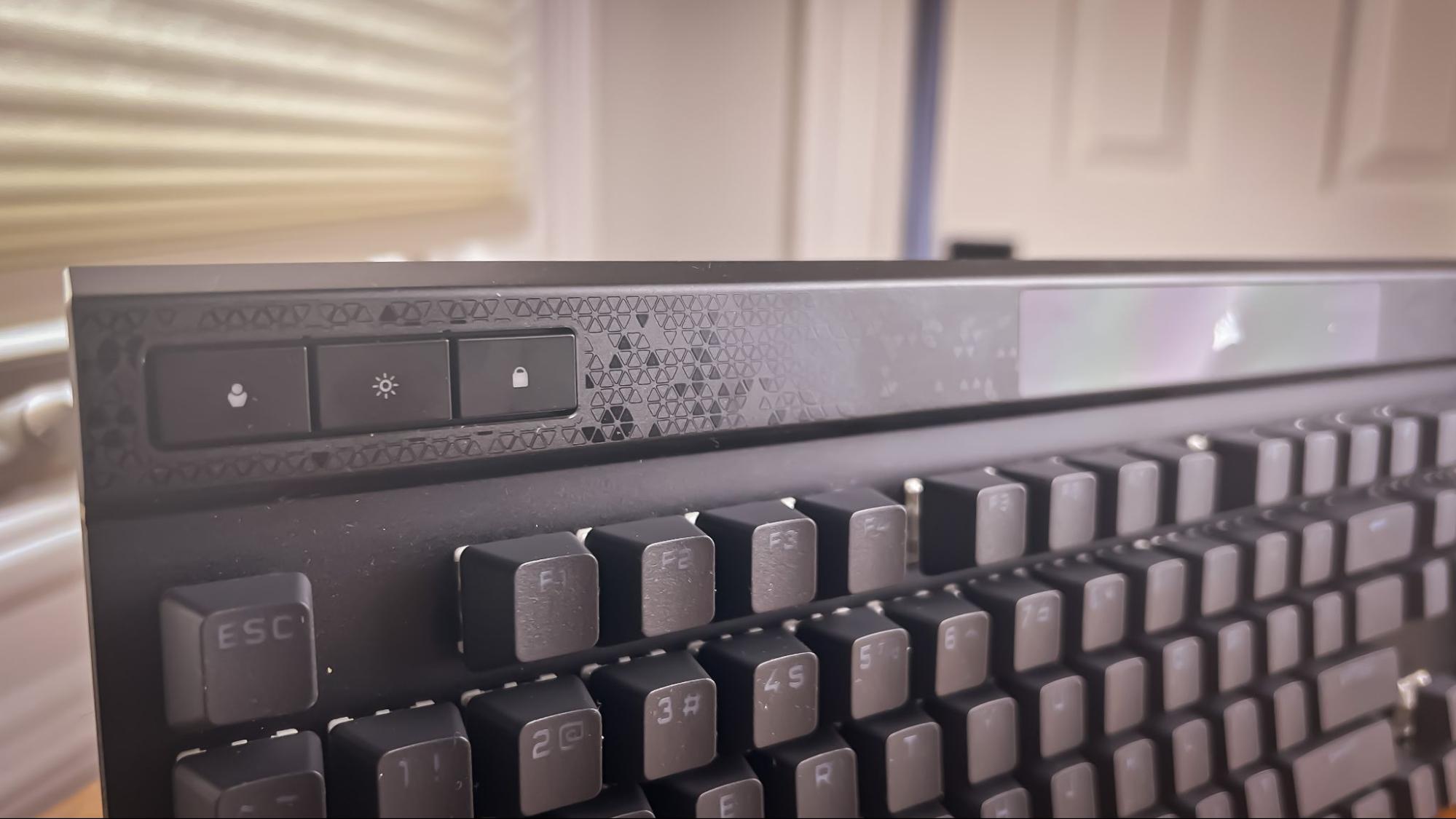

Like its predecessor, the K70 Max RGB comes with AXON technology and a tournament switch. AXON technology uses a special microcontroller with 8MB of storage, which allows for 50 onboard profiles and 20 lighting effects. This technology also gives the board a polling rate of 8,000 Hz and a scanning rate of 4,000 Hz. The rest of AXON’s features aren’t too crazy, but are convenient — such as on-board macro recording. The board also features a tournament switch, which turns off all macro keys and actuation force presets. This is a neat feature, but it seems a bit pointless for a board that houses these types of switches and adjustability in the first place.
The K70 Max RGB ships with a magnetic wrist rest, which is, in my opinion, just as unpleasant to use as the wrist rest that came with the K70 Pro RGB. The wrist rest made my hands clammy due to the triangular pattern, which made it feel like a basketball. Fortunately, the K70 Max doesn’t look odd without the wrist rest, so we can safely ignore it.
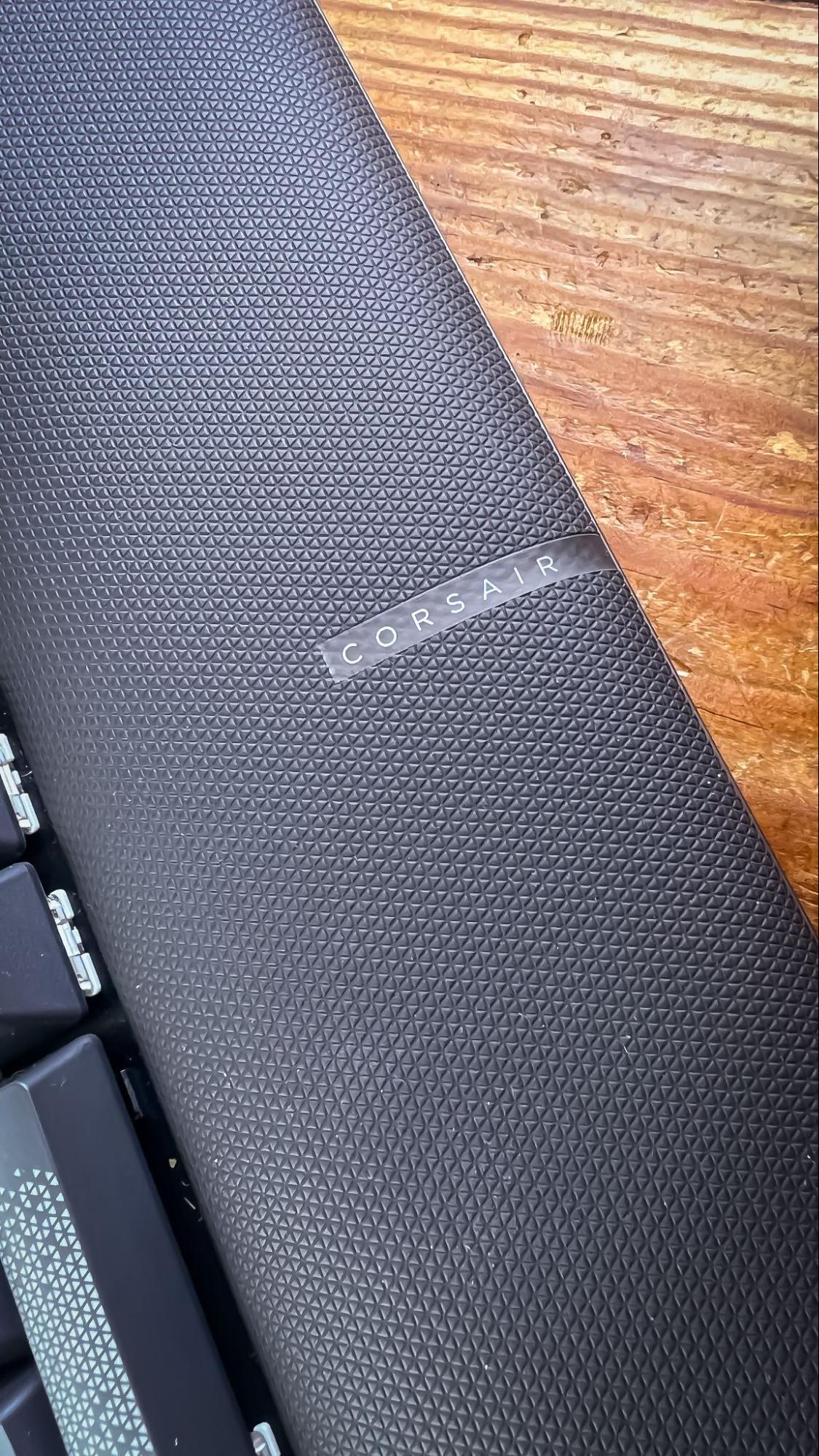
The K70 Max RGB is a full-size gaming keyboard, so it features several extra buttons — including media keys (stop, rewind, play/pause, fast forward) and a volume wheel, as well as dedicated buttons for profile switching, RGB control, and Windows lock. To my surprise, every button within the media cluster was adjustable — even the volume wheel.
Typing and Gaming Experience on the K70 Max RGB
The K70 Max RGB is equipped with Corsair’s own MGX magnetic linear switches, which have an actuation force of 45g. The K70 Pro RGB was equipped with Cherry MX Speed Silver switches, which had the same actuation force but a shorter travel (3.4mm vs. the K70 Max RGB’s 4mm). Of course, the MGX switches also have adjustable actuation, so this difference in travel distance isn’t that significant (and can be changed).
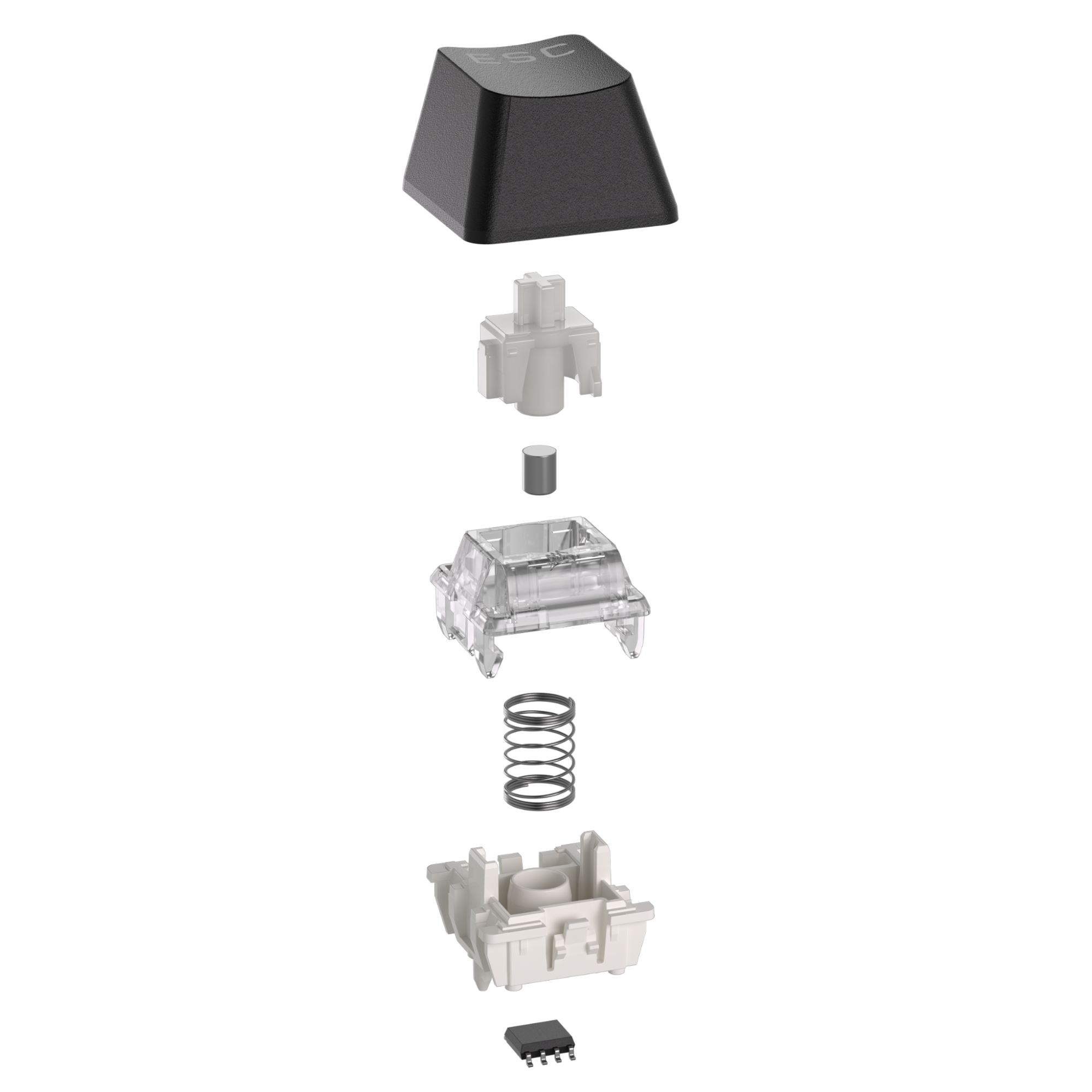
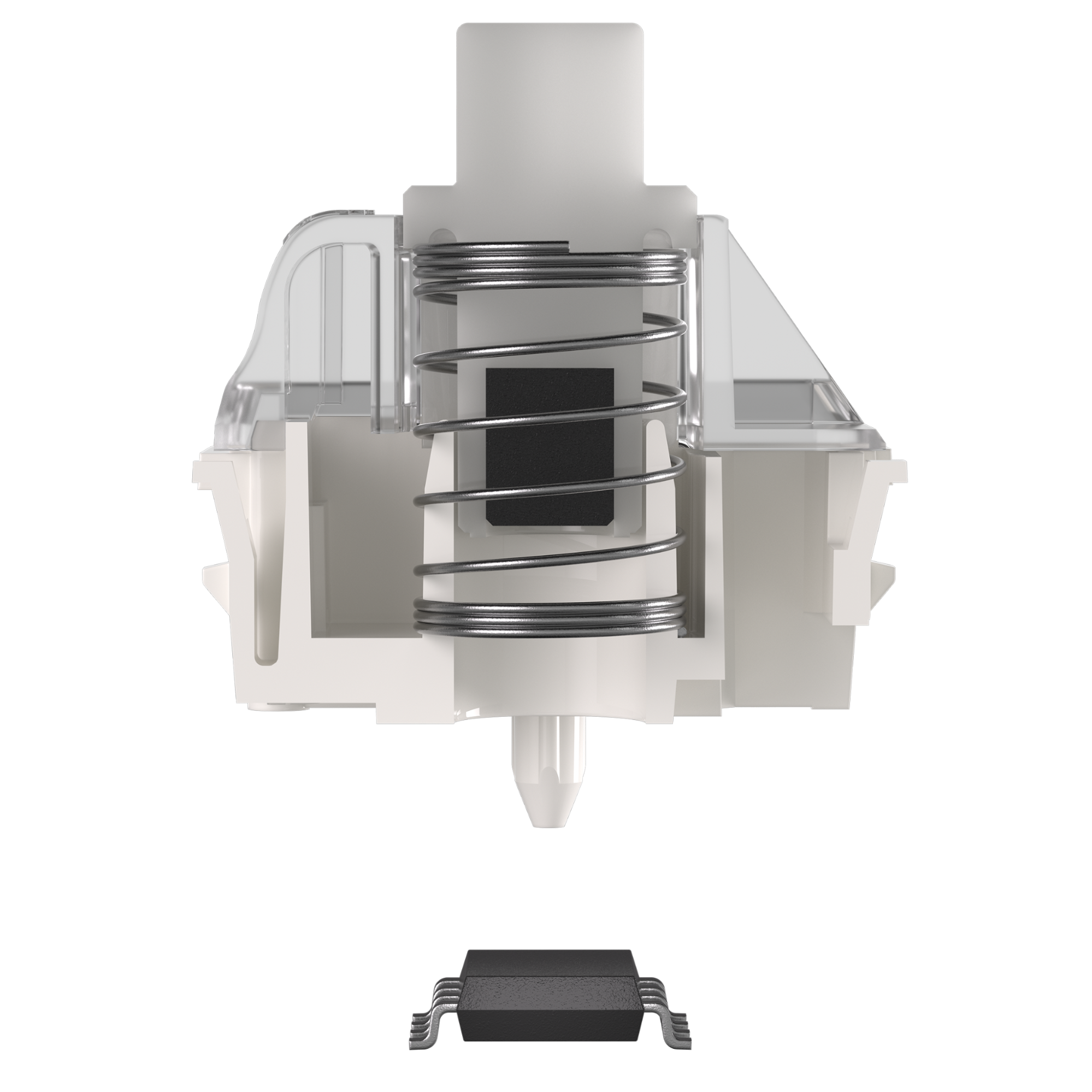
Because the switches have magnets embedded within themselves, the K70 Max RGB sounds and feels very different from most gaming keyboards. The switches are very smooth, but not the same type of smooth you feel from high-quality mechanical linear switches. This is one of those things you’ll have to try for yourself to really understand. The sound of the board is much more metallic and snappy. Each bottom-out sounds a bit like marbles tapping on a piece of metal — it’s very satisfying in small doses. I used the K70 Max RGB for about a week on and off because the clack from the switches started to get overwhelming — but not like clicky switches.
For casual users, the K70 Max RGB’s aggressive typing feel and sound might be a little too much.
Gaming with the K70 Max RGB did not make me feel any more confident than any other gaming keyboard. The 8,000 Hz polling rate is unnoticeable, and the dual actuation feature is hard to set up in-game. In Call of Duty: Modern Warfare II, the settings menu allows you to set secondary actions. For example, holding C goes from crouch to prone. I’m not a fan of this — I felt like this slowed me down because instead of going from standing to prone, I needed to crouch first — which defeated the purpose of being quick.
Software of the K70 Max RGB
My personal rig sits inside of the Corsair iCUE 5000T, so the iCue 5 software wasn’t foreign to me when it came to making adjustments to the board.
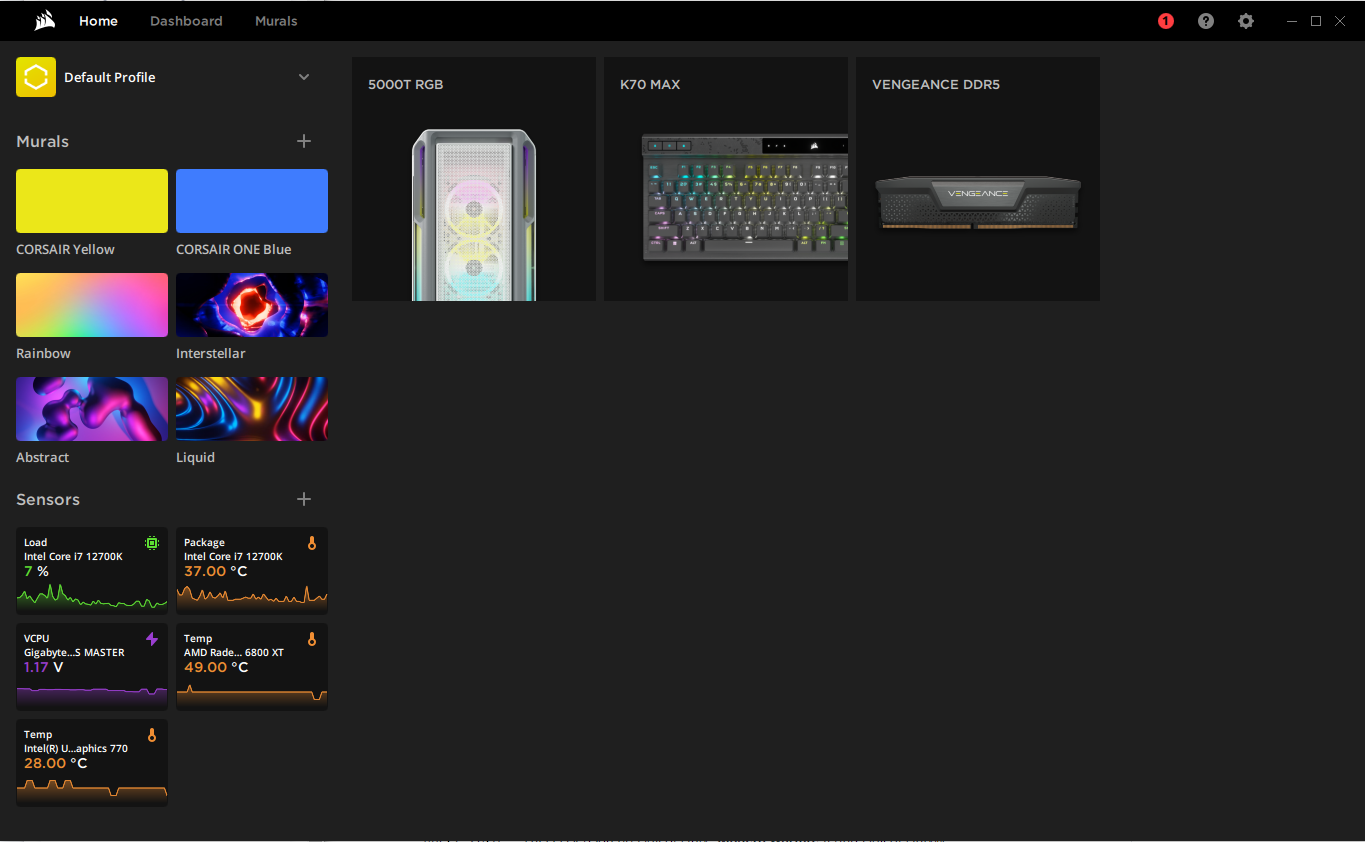
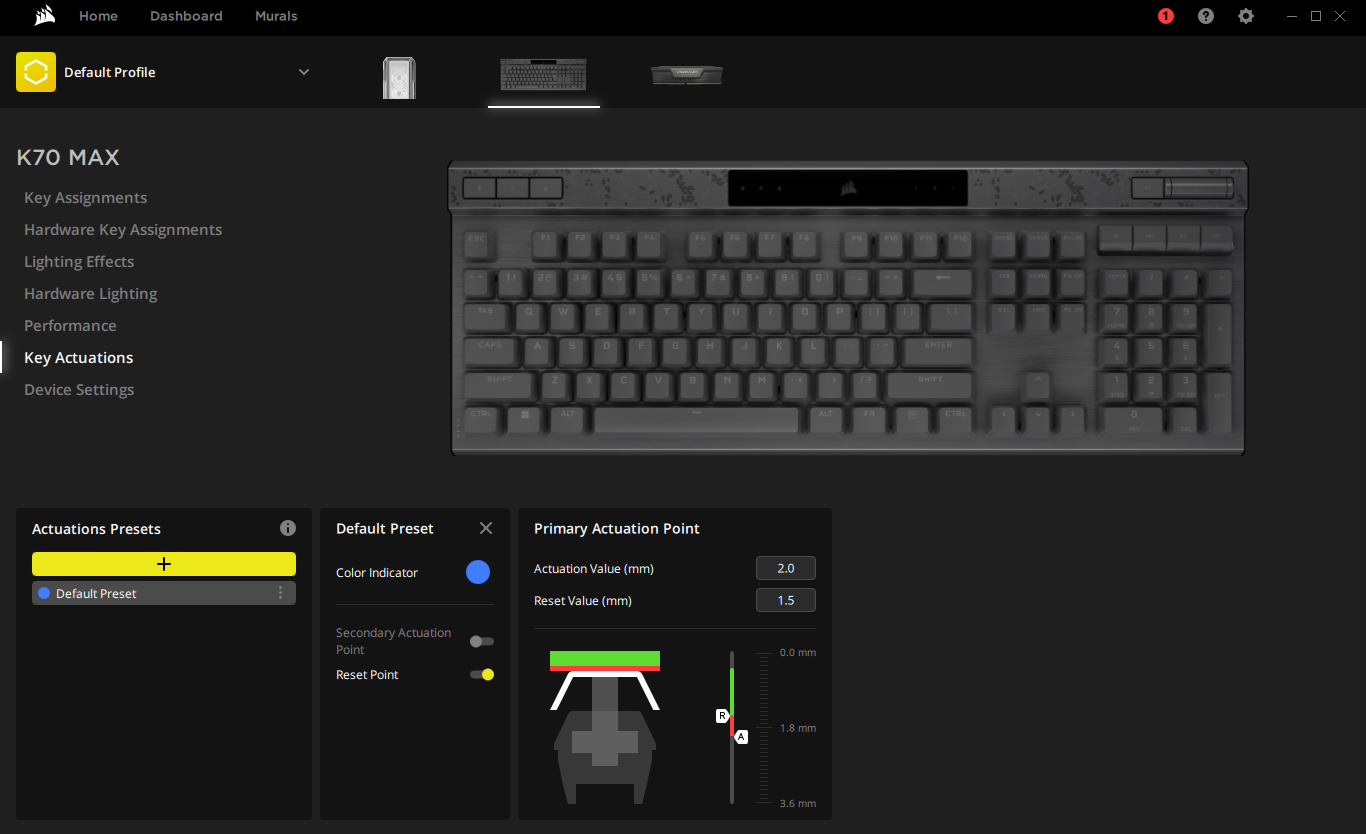
You can adjust each switches’ actuation point individually under the “Key Actuations” tab. I found my happy place to be 2mm for the actuation point and 1.5mm for the reset point.
Oddly enough, the 8,000 Hz polling rate is still embedded in the devices settings menu. This doesn’t take away from the board, but with so few boards on the market with this high of a polling rate, you’d think Corsair would make it easier to find.
A couple of weeks ago, my girlfriend and I went to the Titanic exhibition in New York City and since then, I have been interested in the historical event. I downloaded Titanic: Project 401, which allows you to explore 50% of the RMS Titanic in Unreal Engine 5. Because Unreal Engine 5 is hardware hungry, I used the temperature lighting type to monitor my GPU’s temps instead of an overlay that ruins the immersion.
Overall, I found Corsair’s iCUE software to be user-friendly enough that it didn’t deter me from wanting to set up several profiles (though perhaps not all 50).
Bottom Line
It’s been a little while since I reviewed the Corsair K70 Pro RGB, and because I’m a massive fan of that board, I was excited to use the K70 Max RGB. While the K70 Max RGB’s switches can be overwhelming after a while, they were still incredibly smooth and an upgrade from the MX Silvers. In addition, the sound-dampening is the icing on the cake. Combining that with the amount of adjustability and ease of use, I can safely say that this board is fantastic and recommendable.
MORE: Best Gaming Keyboards
MORE: How to Pick Keycaps for Your Mechanical Keyboard
MORE: How to Build a Custom Mechanical Keyboard

Myles Goldman is a freelance writer for Tom's Hardware US. He reviews keyboards and cases.
-
Johnpombrio In 1981, I started working for HP Test and Measurement as a field repairman. My main product was the 64000 Logic Development Emulator (think Z80 and 68000, heh). It used hall effect switches on its robust keyboard. The keycaps would wear away until the letters were gone, but the switches just kept working.Reply

